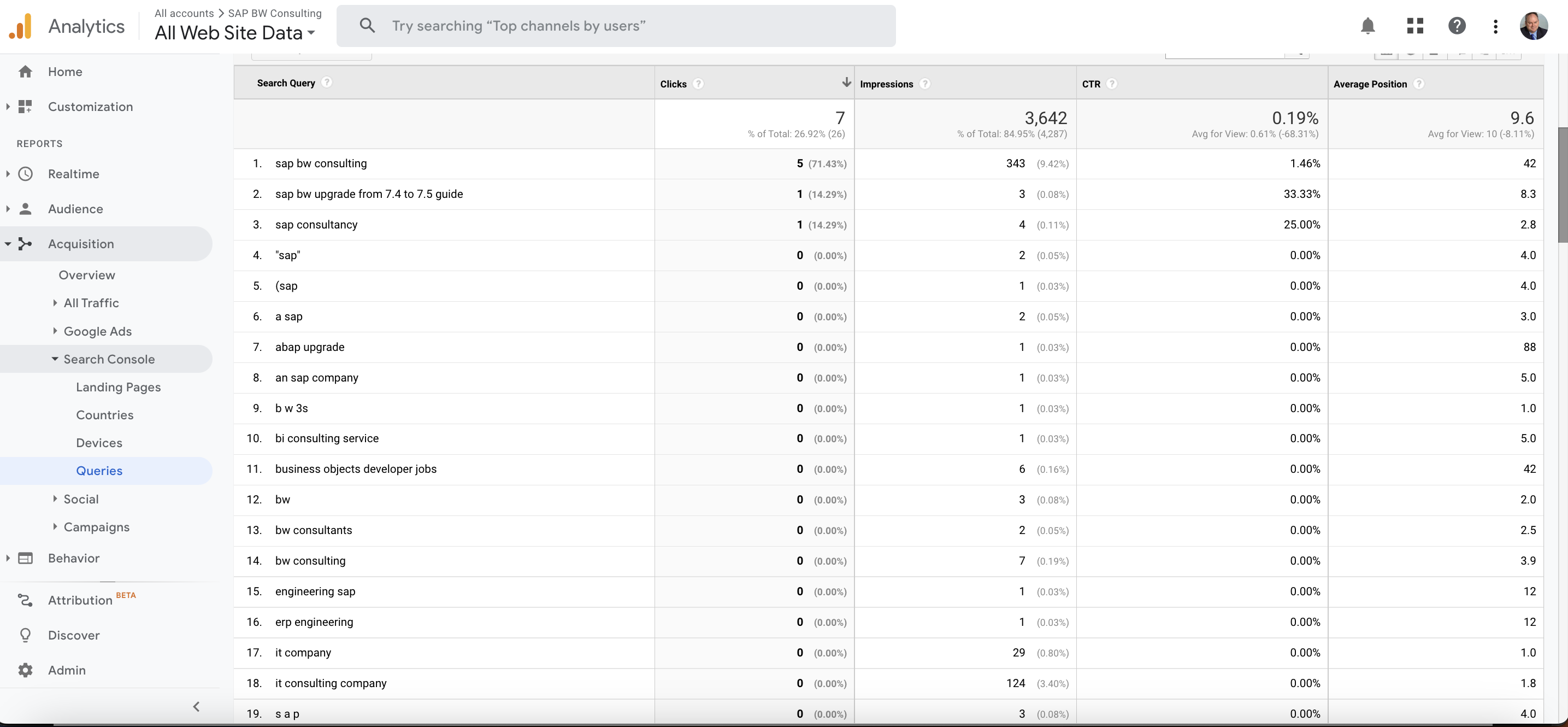Getting that Blogging Idea
You know it’s coming and you cannot avoid it. Your blog should have been finished yesterday and now you are two blogs behind. Ideas that seemed brilliant an hour ago have now lost their shine. You start typing, hoping, that something worthy will miraculously flow out of you. You know that digital marketing success rest upon your blogging efforts.
 Ideas for New Blogs Can Come From Anywhere
Ideas for New Blogs Can Come From Anywhere
However, all hope is squashed when you have realized that the four sentences that have taken you over an hour to write is insipid and directionless leaving you no choice but to delete the pointless drab from your screen, which takes only a mere 5 seconds.
Good News - Inspiration Has Arrived!
Yet, when the sweet inspiration finally hits you, it is one of the best feelings in the world. The words seem endlessly beautiful with every sentence joining each other with seamless finesse.
Writer's Block Be Gone!
Nonetheless, the journey from writer’s block to writer’s awakening can be an elaborate and tedious process even though it doesn’t have to be!
Get Inspired
Though each blogger may have their own way to kick off their blog, here are 15 Inspirational Ways To Stimulate Your Blogging Routine that I have found to be handy when I am in a blogging funk:
- Current Events – What’s happening in the world and tying it into your content will keep your blog cutting edge and relevant.
One of the easiest ways to keep track of what's happening in the world is to set up a daily alert about a subject you're interested in. You can easily do this using a tool called Google Alerts.
For example, I have an alert set up to monitor the Wall Street Journal and mentions of New York. - The Internet – Going online can be a double-edged sword due to the fact that there is a TON of information out there, which can either be useful or a bunch of nonsense. Oh, and don’t get sucked into the Internet vortex and forget that you are trying to get inspired to write.
If you already have a website with some traffic, then you're in luck. You can use data to help you formulate a data driven blogging plan. You'll need three free tools provided by Google:
Google Analytics
Google Search Console
Google Trends
I will talk a little bit more in detail later on in this blog about how to use each of them. - Other Blogs – Different blogs can provoke sparks of creativity in your own blog as well as create blogger friendships where you can share each other’s content as well.
It is often said there are no great writers, only great rewriters. That's why you're spending time reading other blogs.
It can also help you with your keyword research. For instance, if you're reading a blog and notice that it gets a lot of viewers, and especially reactions and comments, you should run it through your favorite search engine.
What should you look for?
You should be able to both discern what keyword phrase the writer is targeting and his intent.
Pay attention as well to the structure, for example, how many bullet points does he use in the blog, how long are they, bolding, and other characteristics about the blog. When starting a blog, it's perfectly acceptable to incorporate these observations into your new blog. - Podcasts – I love listening to podcasts as they offer a new way to get inspired on the go whether you are driving, at the grocery store, or exercising. My favorites include The Moth and This American Life.
I also love to listen podcast that offer practical advice on how to do things, then go do them. The results I get by implementing the suggestions in those podcasts can make great blogs.
The second step my process of listening to a podcast and - Go Outside – Taking a stroll through your neighborhood or a hanging out in a park has a way of bringing a whole different level of consciousness to your writing.
One of the first steps you should think about taking is loading up a podcast to listen to on your iPhone as you wonder around. Sometimes, inspiration hits. When it does, like any good digital marketer, you want to open up your audible notes app (all phones come with it), and leave yourself a quick audio message.
The second step of my process of listening to a podcast and making an audible recording of my thoughts on it is to have it transcribed, which cost about a buck a minute from any number of websites.
While the transcription may be perfect, my thought process is often sort of rambling. That's why the third and final step is to reword it and rewrite it until I am happy with it. - Personal Anecdotes – You can be you own muse. Stories from your past and references from current experiences is an excellent way to trigger content stimulation.
One of the best approaches to using personal anecdotes is to tell stories, especially those where you learned something about yourself, or humanity in general.
Everybody has a unique story. Everybody has had a struggle of one sort or the other. What people want to hear about is how you got through whatever the struggle was and how you felt. If you write a blog post right, they will get the Feelz. If you write a hundred blog posts but don't convey any emotion, you just won't get the traction you're looking for. - A Night Out – Anytime I am out at an art walk, concert or just hanging out with friends, I am always on the lookout for things related to my current blog topic. I once found inspiration in a bathroom wall in Miami!
As blogging is part and parcel of content marketing, you have to look for inspiration wherever you can. - A Conversation With Friends And Family – Many of my blog pieces were contrived on the basis of the conversations with friends and families. Believe me, many of them have some good stuff to share that will become enjoyable content.
You're much more likely to hear honest conversation from those you trust most. But sometimes, you have to pick their brains just a bit. - Sleep On It – I am a big proponent on rejuvenating naps especially when I am feeling stuck or pondering big decisions. It’s crazy how many times I have woken up from a slumber with the resolution to my dilemma.
One of my favorite techniques for using this approach is to create a mind map about whatever subject I am currently working on, even the general theme. I find that the more time and effort I put into creating my mindmaps, the more ideas I wake up with. - Your Social Media – Facebook, Instagram, Twitter, YouTube, and Pinterest should have more than enough colorful material to get you started on a good topic for your blog, if not more.
Remember, good blog post ideas can come from anywhere. One of favorite techniques is to use mind mapping to take an idea, perhaps one I got from one of the aforementioned social media channels, and generate a detailed mindmap (See item 15 below) of it.
Then I sleep on it. It never fails to yield new ideas. Sometimes they are best for my personal blog, which is hosted on a wordpress blog, and sometimes, they are better suited to my business blog. - Go Shopping – You don’t necessarily have to spend your money but going to the store and looking at products, advertisements, and displays can most definitely have some positive effects on coming up with creative ideas for your blog.
In some case, it may even inspire you to start a blog! - Your Favorite Book or TV Show – It’s your favorite book or show for a reason. Tell everyone why you love it or how it relates to experiences in your life.
Remember, everyone can be a content creator, and the people who create your favorite TV show or write your favorite books and magazines are all trained at creating engaging content.
You should pay attention to them. - Write About Something You Are Good At – Whether it is a video tutorial or step-by-step guide, if you have knowledge about something, share it with the world!
You may think everything has already been covered. But we each bring unique skills and experience to task of writing a blog. - A Thought-Provoking Quote – Sometimes a small number of words of wisdom can prompt a whole new world of content creation.
You should get in the habit of writing down these quotes, as you probably hear them all the time. But it is very easy to forget what you heard or where you heard it. - Mind Mapping – My boss introduced me to this concept where you map out your ideas and creative thoughts through word associations. The particular program he uses is ThinkBuzan's iMindMap.
Google Analytics
Google analytics (GA) is a free analytical tool provided by Google, which can be easily installed on your blogging platform by dropping in a simple piece of tracking code, which Google provides.
While the Google Analytics tool has wide array of capabilities, the one you want to focus on in particular is using the search queries report.

This report tells you which search terms resulted in both impressions and or a click. You can export it to data mine for blogging ideas.
Google Search Console
The Google Search Console is another free Google tool, and it integrates with Google Analytics. It is a powerful tool that can help you uncover detailed information about which pages are ranking and what search terms are being used when Google decides to surface that page.
Tutorial for Finding Blogging Ideas
To demonstrate how to use the GSC, I recently put together this tutorial that walks you through and provides a step-by-step 'how to' guide for finding out exactly what questions you should answer.
Google Trends
Finally, you should learn how to use Google Trends. It's another free Google tool for uncovering both keywords, and most importantly, entities. This is important because Google now uses entities as a primary way to determine the best page to present on SERP (Search Engine Result Pages).
Practice Writing Everyday for Mastery
Writing can be like second nature one day and your arch nemesis the next. However, having a plan of action when it comes to inspiration and culminating in creativity can make it enormously easier.
Make Money From Google Adsense
Get paid for your hard work.
Google AdSense can automatically display relevant targeted ads on your blog so that you can earn income by posting about your passion. It does this by having you insert a simple code where you want ads to appear on your blog. While not all blogs are a good fit for using Google AdSense and many businesses choose not show ads on their blogs, many other do. How do you achieve success with Google Adsense?
Know Your Audience
While Google Adsense is a great way (but not the only way) to derive some income from ads they display on your website, for it to move the needle on your income, you need to generate a lot of traffic. That means not just blogging frequently, and at a high quality level, it means knowing your audience so your blogs reach exactly the intended audience.
Blog Daily for Best SEO Results
Search engines love new content, and as a result, blogging is a great search engine optimization (SEO) tool. A defining feature of blogs is the frequency with which they're updated, and that fresh content helps improve a website's SEO performance.
Make Blogging a Part of Your Daily Routine
Including some of the 15 activities I do to get inspired and your own activities can make your days of blogging something pleasurable instead of a laborious task to cross off your list.
Blogging Success Takes Time
Blogging takes time. Time is money. That's why you need to view it as a business investment. In my experience, and according to the data from Hubspot, you should be targeting the following:
- To have published 60 blogs before you start see significant traffic
- At 200 blogs published, you should start to see a very rapid climb in traffic
- One of our highest performing clients had 1,000 published blogs and was generating over 1,000,000 page views a month.
Generally speaking, by writing more, you sell more.
How to Start a Blog
While this blog was about how to come up with ideas for your blog, I would be remiss if I didn't talk about the nuts'n'bolts of setting up your blog.
Probably the most important step you'll need to take is selecting a domain name. Once you decide on your preferred blog name, you will need to check and see if it is available, which can easily be done on any domain name provider, such as Godaddy.
Choose a Website Builder
If you're just getting started, and not yet generating passive income from your blog, you will want to keep cost low. There are many popular Content Management Systems (CMS) out there, but by far, the largest content management system is Wordpress, which is also allows you to build a website along with creating blog posts.
What is a Content Management System?
And Why Do You Need One?
A CMS is software that provides a method of managing your website is commonly called a CMS or “Content Management System ”. As you create website pages, including blog posts, add in images, videos and many other types of content, you will quickly find you need a system help track and manage it all.
A CMS helps you take advantage of everything you write on your blog, and provides guidance in the form of 'Best Practices' embedded throughout the system. With the right plugins, plus understanding what computer is already doing in the background, you can also easily avoid grammatical errors.
Choose a Website Theme
Unless you're an expert at website design, you're going to need a wordpress website theme. There are many free as well as paid wordpress themes available.
Choose a Website Builder
After you've grabbed your domain name, created a Wordpress account, decided who will be your wordpress web hosting provider, you just 'install' your particular wordpress and wordpress theme.
There are many smaller steps you actually take to get your blog setup, but these are the basics. You mostly just follow the onscreen instructions.
Get to Know Your Wordpress Plugins
While the Wordpress platform is a content management platform, it is not really designed to work 'stand-alone'. Instead, it uses a concept called plugins, which are 3rd party programs you install and activate to make it do things it doesn't do out of the box.
Wordpress SEO
While there are at least 50,000 known Wordpress plugins, you will need at least one dedicated to SEO. One of the most common ones is Yoast. You can get started with the free version, but I recommend you can, as soon as your budget permits, get the paid version, and once installed, ensure it is connected to your Google Search Console.
Blogging for Business Outcomes
Are you blogging for a business? Why don’t you take a look at our free Hubspot-partnered ebook on How To Grow And Scale A Business Blog by clicking on the button below.
People who read this also read:
12 Content Creation Expert Techniques
Get an Onsite Content Marketing Workshop
Learn How to Create Killer Marketing Content
How to Blog Like an Inbound Marketing Superstar
Social Media Prospecting Workbook
Until Next Time…


